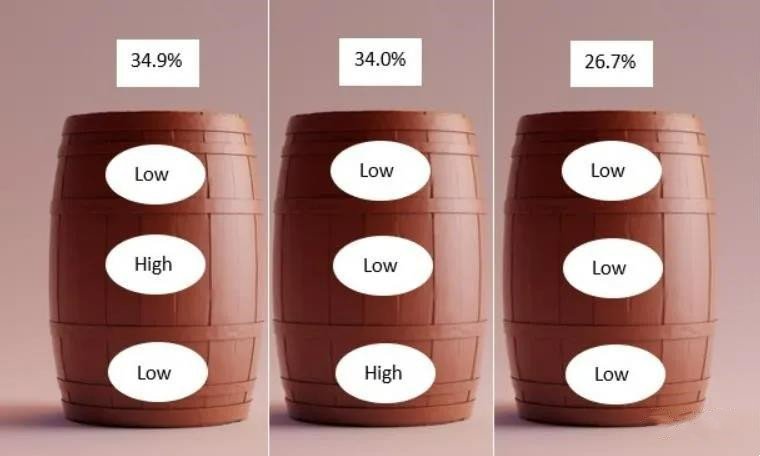Globally, consumer demand for low-sugar foods is increasing due to the negative impact of high sugar intake on human health and higher than recommended total dietary sugar intake. This indirectly promotes the development of natural sugar substitutes for healthy raw materials, such as erythritol, stevia, mangosteen, allulose, etc. A growing body of scientific research has found that the health effects of a high-sugar diet include weight gain, metabolism, dental caries, and poor oral health. The World Health Organization (WHO) recommends that free sugars make up less than 10% of total energy intake.
Based on the problem of excessive daily sugar intake, European and American countries have begun to levy a “sugar tax”. Especially sugary soft drinks were levied first. Up to now, “sugar reduction/sugar reduction” has also been put on the national agenda in China. “Healthy China Action (2019-2030)” pointed out that the government will restrict the production and sales of high-sugar foods and promote the production and consumption of low-sugar or sugar-free foods. Sugar reduction has become one of the hottest trends in the food and beverage industry.
1 Low-sugar products, not just sugar substitutes
Traditionally, the realization of low-sugar and hypoglycemic products is achieved by replacing part of sucrose with “low-calorie/low-calorie/natural” natural sweeteners. Behind the upgrade of products, consumption has promoted the rapid development of raw materials represented by erythritol. Researchers are developing new sugar substitute raw materials, such as cellulose, sweet protein, and so on. Market data from Valuates Reports shows that the global natural sweetener market is expected to grow from $22.49 billion in 2020 to $27.94 billion in 2026, with a compound annual growth rate of 3.7%.

However, the realization of low-sugar products is not only achieved through the realization of sugar substitute raw materials, but also through technology. Researchers in Canada and Vietnam have developed a method for 3D printing chocolate. This chocolate is lower in sugar but tastes just as sweet as regular chocolate. The process involved using a 3D printer to layer chocolates with different sugar concentrations, and the samples were then assessed for sensory quality and sweetness by the research team.
The researchers found that the chocolate samples with 41.6 percent sugar were similar in sweetness to the control group (51.5 percent sugar), without any change in sensory quality. Meanwhile, the ability to layer high- and low-sugar chocolates through 3D printing technology can reduce sugar by 19% without changing overall sweetness perception and overall preference. The findings of the study have now been published in the journal Food.
2 Chocolate is not “sweet” anymore
Regarding the specific implementation method, the researchers first purchased two types of Swiss dark chocolate from a supermarket in Canada. 47% of dark chocolate was considered high in sugar and 72% was considered low in sugar.
The specific operation is as follows, the chocolate is heated to 45 to 55 degrees Celsius and then cooled to 27 degrees Celsius. The cooled chocolate is fed into the 3D printer’s twin extruders and printed at a set temperature of 28 degrees Celsius (low-sugar chocolate) or 32 degrees Celsius (high-sugar chocolate). In addition, the chocolates were layered into six different combinations in a cylinder to produce different types of % sugar concentration (w/w) as shown below:


Six three-layer hollow cylinder samples and their total sugar concentration percentage (w/w), where H represents the high sugar layer (51.5%) and L represents the low sugar layer (26.7%). The high-high-high sample had a sugar content of 51.5%, comparable to conventional chocolate sold in grocery stores, so it was used as a control or non-reduced sugar chocolate. The researchers chose 3D food printing because it is a more precise and efficient way to create chocolate layers than traditional methods using molds. And it gives users the flexibility to create layered designs of different shapes as needed.
After researchers developed the chocolate, 72 University of Alberta students and staff over the age of 18 were recruited for sensory assessments. These participants enjoyed milk and dark chocolate and ate them regularly. They completed an online questionnaire asking about the sweetness of the six samples and their preferences. From the results, all samples were rated not too sweet to moderately sweet (2.3-3.3) on a 5-point scale. Meanwhile, the overall preferences of the 6 samples were not significantly different, and their preferences were all slight or moderate. Combinations of high-low-high and low-high-high, which are comparable in sweetness to the control samples, are preferred.
The sugar content of both samples was 41.6%, which was 19% lower than the control (51.5%) group. In other combinations of low-low-low (26.7%), low-low-high (34%), and low-high-low (34.9%), participants found lower sugar levels. According to the researchers, the position of the high- and low-sugar chocolate layers was associated with perceived sweetness intensity and temporal sensory profile. For example, the chocolate sample with the high sugar layer at the bottom tasted as sweet as the control sample, despite having lower overall sugar content.
The 3D-printed chocolate, which had a high-sugar layer (high-low-high) on the top and bottom, most closely resembled the temporal sensory profile of the sweetest control sample (high-high-high). The spatial distribution of sugar can be achieved by 3D food printing (3DFP), using a dual extruder 3D food printer to create alternating layers of chocolate with different sugar concentrations.
3 3D Product Development Trends
These findings suggest that a 19% reduction in sugar content by 3D printing layering did not affect perceived overall sweetness and overall preference. Future studies could utilize 3D printing techniques to generate different numbers of chocolate layers, concentration gradients between layers, and all possible layering orders to more clearly characterize the effects of these variables on perceived temporal profile and overall sweetness.
Globally, there is an increasing demand for hypoglycemic foods due to the negative impact of high sugar consumption on human health. The researchers say there is an incentive for the food industry to continue researching glucose-lowering strategies to achieve specific glucose-lowering goals.
3D food printing is an emerging technology for developing new products. 3D food printing is done by depositing raw materials layer by layer, so a step effect can be observed, which can be used to remanufacture or decorate foods such as cookies or chocolate. This layered deposition plays a key role in providing new chewing experiences, such as 3D printed chewing gum giving consumers a new effect of layering in the mouth.

